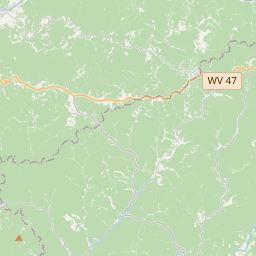Weston in the Civil War
Historical marker location:






Target of Raids. Jones-Imboden Raid
April 12, 1861: The Civil War begins with the Confederate attack on Fort Sumter, located in South Carolina's Charleston Harbor.
April 15, 1861: President Abraham Lincoln issues a call for 75,000 volunteers to serve in the Union Army to suppress the rebellion.
May 24, 1861: The first major land battle, known as the First Battle of Bull Run (or First Battle of Manassas), takes place in Virginia. It ends in Confederate victory.
September 17, 1862: The Battle of Antietam in Maryland becomes the bloodiest single-day battle in American history, with heavy casualties on both sides. The Union forces, commanded by General George McClellan, manage to halt Confederate General Robert E. Lee's advance into Union territory.
January 1, 1863: President Lincoln issues the Emancipation Proclamation, declaring that all slaves in Confederate-held territories are to be set free. However, the proclamation does not immediately free all slaves in the United States.
July 1-3, 1863: The Battle of Gettysburg in Pennsylvania takes place, resulting in a significant Union victory and inflicting heavy casualties on Confederate forces. It marks a turning point in the war.
November 19, 1863: President Lincoln delivers the Gettysburg Address, emphasizing the principles of liberty, equality, and the preservation of the Union.
April 9, 1865: General Robert E. Lee surrenders to Union General Ulysses S. Grant at Appomattox Court House in Virginia, effectively ending the Civil War.
April 14, 1865: President Lincoln is assassinated by John Wilkes Booth while attending a play at Ford's Theatre in Washington, D.C.
May 10, 1865: Confederate President Jefferson Davis is captured, signaling the collapse of the Confederate government.
December 6, 1865: The Thirteenth Amendment to the United States Constitution is ratified, officially abolishing slavery throughout the country.
While this timeline provides an overview of key events, it is important to note that the Civil War spanned over four years, from 1861 to 1865, and encompassed numerous battles, campaigns, and political developments that shaped the course of American history.
The first land battle of the Civil War was fought in Philippi, West Virginia on June 3, 1861. Union forces, under the command of General George B. McClellan, defeated Confederate troops in what is known as the Battle of Philippi.
The county was named after Colonel Charles Lewis, a prominent figure in the American Revolutionary War. In the early years, Lewis County was primarily an agricultural community, with farming and logging as the main industries. The small town of Weston, which became the county seat, grew rapidly due to its location along the Northwestern Turnpike.
One of the most significant events in Lewis County's history occurred during the Civil War. Weston was the site of the Weston Insane Asylum, which was the second-largest mental institution in the United States at the time. During the war, the asylum was used as a military prison by both Union and Confederate forces. The infamous raid led by William "Grumble" Jones in 1863 resulted in the escape of over 700 Confederate prisoners.
In the 20th century, Lewis County experienced economic growth with the discovery of natural gas and oil in the region. The extraction of these resources brought new industries and job opportunities to the area. Today, Lewis County remains a close-knit community with a blend of rural charm and modern amenities, attracting visitors with its picturesque scenery and historical landmarks, such as the Trans-Allegheny Lunatic Asylum, which is now a popular tourist attraction.
Lewis County Timeline
This timeline provides a glimpse into the major events and milestones that have shaped the history of Lewis County, West Virginia.
- 1771: Lewis County was established by an act of the Virginia General Assembly.
- 1774: The first permanent settler, John Jackson, arrived in the area.
- 1805: Weston, the county seat, was established.
- 1811: The first courthouse was built in Weston.
- 1861-1865: Lewis County experienced significant involvement in the American Civil War.
- 1863: Weston became the site of the infamous "Weston Lunatic Asylum" (later known as Trans-Allegheny Lunatic Asylum).
- 1936-1942: Stonewall Jackson Dam and Stonewall Jackson Lake were constructed.
- 1964: The Trans-Allegheny Lunatic Asylum ceased operations.
- 2005: The Trans-Allegheny Lunatic Asylum was opened for tours and events.